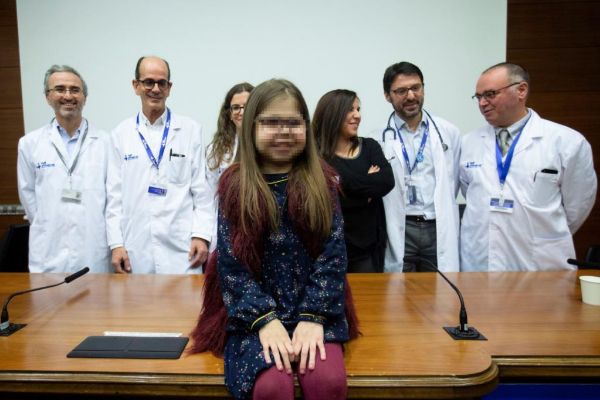Iria, a 10-year-old girl with an ultra-rare disease, is the first Spanish girl to live with a transplanted heart, kidney and liver.
The little girl, who suffers from a disorder called type 9 nephronoptisis , which causes serious alterations and damage to the development of her organs, received a heart in 2009, with just five months of life, and now, just over two months ago, she has just receive a double liver and kidney transplant. All interventions were carried out at the Vall d'Hebron Hospital in Barcelona.
According to Ramón Charco, head of the Hepatobiliopancreatic and Transplant Surgery department of the Catalan center and responsible for the operation, although "double liver and kidney transplants had previously been performed in pediatric patients" , this is the first time this double is done intervention "in a girl who had previously received a heart transplant".
"Doing a double transplant in an already transplanted patient is an operation of great complexity, especially for the maintenance of anesthesia. Very few centers can do it," says Charco.
The rare disease that Iria suffers is due to a mutation in the NEK8 gene that causes serious alterations in vital organs such as the heart, liver or kidneys. In addition, it also causes damage to the nervous system and bones.
According to hospital data, Iria is the oldest patient with this disease . There is no other documented case in the world that has lived so long with this pathology. In fact, they point out, the majority of patients with a mutation in the NEK8 gene do not exceed the fetal period or die during the first months of life.
In the case of Iria, the team that treats her in the Catalan center, decided to perform a heart transplant with only five months of life after verifying that she had a serious heart problem. At that time it was not possible to determine the cause of the damage suffered. "We saw that the patient suffered from hypertrophic cardiomyopathy that was incompatible with life. As the situation was very serious, we decided to do a heart transplant," Ferran Gran, a pediatric cardiologist and pediatric cardiac transplant medical coordinator in the center said in a statement. Barcelona
The girl evolved favorably until, in 2017, she began to have liver problems. "The organ was too large for its age and had signs of fibrosis. In addition, it also suffered a problem of portal hypertension, which raised its risk of bleeding, " explains Charco, who details that the genetic studies that allowed the disease to be identified were performed after detecting a serious renal failure in the body of Iria. For this reason, the patient had to receive dialysis for several months.
As the deterioration was progressive and could not be stopped, doctors considered the double kidney and liver transplant "as the only possible treatment."
Two months after the intervention, which was a success, Iria is in good condition and her organs are responding well to the transplant.
"There is no risk that the fibrosis caused by the disease will reproduce again in the transplanted organs," clarifies Charco, who emphasizes that the patient is evolving very well and only needs the care of the first months after a transplant.
"He is looking forward to going back to school and regaining his normal life," he concludes.
According to the criteria of The Trust Project
Know more- Science and Health
CienciaGreta Thunberg, at the Climate Summit in Madrid: "We have to educate adults about the climate"
Climate crisis Teresa Ribera: "We have 10 years left to avoid the climate catastrophe"
HealthOpen a trial on confidentiality of inherited diseases

